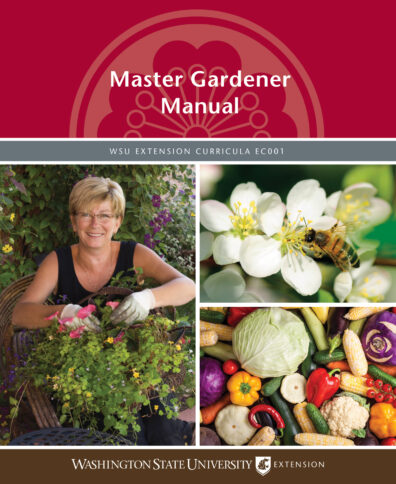Exploring WSU Extension publications
With offices located in every county in the state of Washington, WSU Extension not only physically impacts Washingtonian lives, they are also able to provide resources to people beyond the state’s borders thanks to their publications.
Ranging from topics like agriculture and energy to gardening and family and home, Extension publications are available in different formats for people to utilize.
“[Extension’s] mission is to take University research and distill it and disseminate it to the larger population,” said Gerald Steffen, creative manager in CAHNRS Communications. Steffen designs Extension publications. “It’s a way for our subject matter specialists and experts…to reach beyond just academic publications and get their information out in front of people that can better their lives.”
As varied as their topics, so too is the kinds of resources Extension produces. With items like books to brochures to manuals to fact sheets, they have many ways to educate their audience. When they need printed materials, Extension works with Design and Printing Services (DPS).
A look at the Master Gardener manual

This publication is 652 pages printed in full color. The Extension shop website describes this manual as the “main text for training new Master Gardener volunteers in Washington state,” with 25 chapters covering a plethora of topics related to home gardening in the state. It is a binder with a full color cover and spine insert, and printed tabs. These pieces run on different presses at DPS based on their specifications.
Christy Nowak, program coordinator with DPS, works closely with Extension to help them get their projects printed.
“We have the best print services for their work and their design and have always worked closely with them on any production,” Nowak said.
Nowak said DPS prints pamphlets, recipe books, Master Gardener manuals, and classroom materials, among other things.
A look at the Canning Fruits booklet

This 8 page booklet provides information about a process that has become more popular in light of the COVID-19 pandemic: canning. Using a combination of full color and black and white printing, this publication is full of safety instructions. DPS prints this saddle stitched booklet on a press that has the ability to print and bind in line so that once it comes off of the press, it just needs a final trim and it’s done!
Lagene Taylor, publishing coordinator in CAHNRS Communications, said they work with Design and Printing Services because they are convenient and provide great service.
“We can ask most anything and usually you’ll get right on it and say, ‘Yes we can do it,’ or ‘No we can’t quite do that, but we can send it out and find somebody that can,’” Taylor said. “It’s convenient and friendly.”
Steffen said he enjoys having one place that can take care of the more simple printing but also have the ability to do more complex things like large format printing.
“That’s opened up some new avenues for me for design and opportunities for our clients,” Steffen said.
Contact your project coordinator today to find out how you can get help with your next upcoming project, whether it’s a printed piece, an HTML email, or some other kind of creation.

Extension publications begin their life when someone under the umbrella of the College of Agricultural, Human, and Natural Resource Sciences first considers how their work could benefit the public.
“What drives [the publications] is program directors and faculty finding a need, and they should be looking through existing Extension titles before they decide that we need something else on raspberries if we’ve already got some other publications,” said Gerald Steffen, creative manager in CAHNRS Communications. “Is it relevant? Does it have different information?”
These publications are steeped in science, but they are presented in a way the general population can use it, said Gerald Steffen, creative manager in CAHNRS Communications.
Lagene Taylor, publishing coordinator in CAHNRS Communications, said she coordinates the peer review, editing, and design of the publications she oversees. Every publication created by Extension goes through peer review.
“I enjoy seeing the final product after it’s moved through the entire process from conception,” Taylor said.
Once the publication is complete, it becomes available for people to access.
“The majority of our publications are free PDF downloads,” Taylor said. There are also hard copies available for people to purchase, but almost all of their content is available online, according to Taylor.
You can find their printed resources and so much more on the Extension shop website.